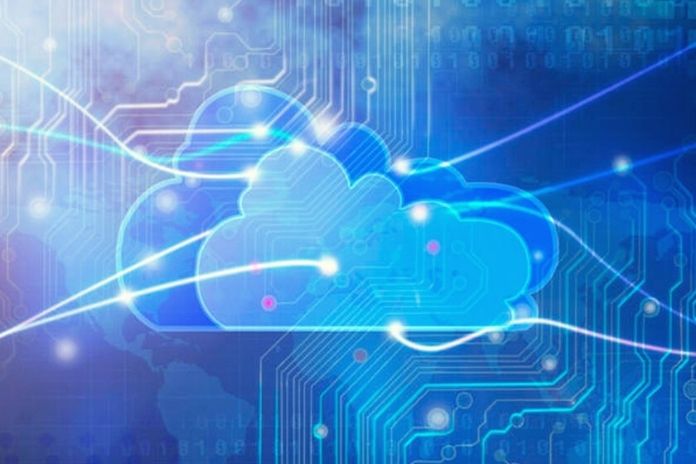Meaning
The pressing and constant evolution of technology projects us into the future with innovative and revolutionary solutions for companies and professionals, about their daily operational life, never dissociated from the IT tool, and whose management almost always requires a significant expenditure of human and above all a considerable financial commitment. The new cloud computing platform, until yesterday, of exclusive use for large companies, is very topical, which will determine profound changes in the management of applications and every IT activity of small and medium-sized companies, including professionals.
The English term cloud computing, whose translation is called cloud computing, remains the subject of various interpretations, in any case of polyvalent meaning depending on the context to which it refers; metaphorically, it makes us think of a cloud inside which our data ends up, as indeed the Internet makes us imagine a gigantic ether suspended in space. However, it is a new way of providing services to companies, which allows information to be archived, stored and processed, exploiting software and hardware resources geographically distributed or centralized in a single structure, and remotely virtualized according to the client-server architecture.
Cloud computing infrastructures are large data centres that allow the user to have access to the resources (storage, applications, programs, services) he needs, with the pay-as-you-go formula; this gives rise to a new business model that allows companies to considerably reduce their internal IT power to acquire it externally, according to the needs of the moment. More simply, on the one hand, the supplier offers hardware-software services that can be used at any time, from any place and with any device; on the other hand, the customer who can, on-demand and payment according to use, remotely access the services without the hassle of installing, updating and backing up or maintaining the infrastructure.
Composition And Types
Throughout the cloud service delivery process, three distinct figures stand out, each with different tasks:
- Hosting Service Provider: is the Provider of cloud computing services such as virtual servers, storage space, management applications, according to a previously discussed pay-per-use model;
- Cloud Broker (administrator customer): is the administrator of the cloud services, in terms of use, configuration and supply; it also has the task of negotiating and acting as an intermediary in the relations between the cloud provider and the consumer cloud;
- Cloud Consumer (end-user): is the user of a service provided by a cloud provider.
- The public model of distribution of cloud services includes the three basic types:
- SaaS (Software as a Service): this is the most frequently encountered example for which the company, instead of installing traditionally purchased the software directly on its machines, uses a third company (hosting service provider) that prepares the programs by making them accessible via the Internet anywhere and on any device, providing for a payment based on actual use;
- PaaS (Platform as a Service): it is almost identical to SaaS in operation, but the provision of the service is related to a software platform represented by a series of programs, libraries, services, etc .;
- IaaS (Infrastructure as a Service): Provides the use of hardware resources remotely; this is a virtualization process of hardware structures outside the company perimeter to be used for the applications in use.
Advantages And Disadvantages
The evolution of IT makes us abandon the conventional model to move to the new cloud computing platform with all the resulting advantages both from an economic and a technical point of view.
Advantages From The Economic Point Of View:
- Reduction of initial fixed costs: savings for the no longer necessary investments, initial and subsequent, on software and hardware (purchase, configuration, installation, maintenance and disposal of hardware and software). It is not necessary to have high-end computers to access online cloud services: the programs and data reside in the cloud infrastructure, managed by highly experienced and qualified personnel;
- Greater flexibility: the possibility of an easy and timely adjustment of the contractual conditions according to greater or lesser needs;
- Greater attention to its core business: human energies are released that were previously wholly dedicated to managing the infrastructure; the management of the entire IT architecture is delegated to the Provider.
Advantages From The Technical Point Of View:
- Greater scalability: faced with the need for more or fewer resources, the manager can expand or limit the infrastructure with extreme flexibility;
- Access to the cloud on the move: the connection to data can take place from any place and at any time, even through smartphones, netbooks, laptops or desktop PCs;
- System security : possibility of implementing a security system aimed at protecting data and networks with services that are always manned by backup.
- Independence from peripherals: since we deal with online programs and data, we are not bound to use particular hardware or specific network configurations, but just any fixed or mobile device capable of connecting to the Internet through any browser is sufficient.
Disadvantages
There is some resistance on many sides to the potential risks that come from, on the one hand, complete dependence on the Internet, and on the other, from IT security and the violation of privacy to which the stored data are subject:
- Internet dependence: the complete dependence on the connection with the Internet and therefore the impossibility of the connection can cause a blackout of any activity;
- IT Security and Privacy Violation: given that the data is stored in a virtual server and therefore often subject to interventions by the Provider, there is a risk of different manipulations for market research, industrial espionage or others. The security risk increases with wireless networks, much more exposed to cases of computer piracy. It becomes even more complicated if the Server Farms, where personal and sensitive data are stored, belong to companies with a residence other than the user. In any violation or failure, severe and well-founded difficulties may be encountered in proceeding legally.

